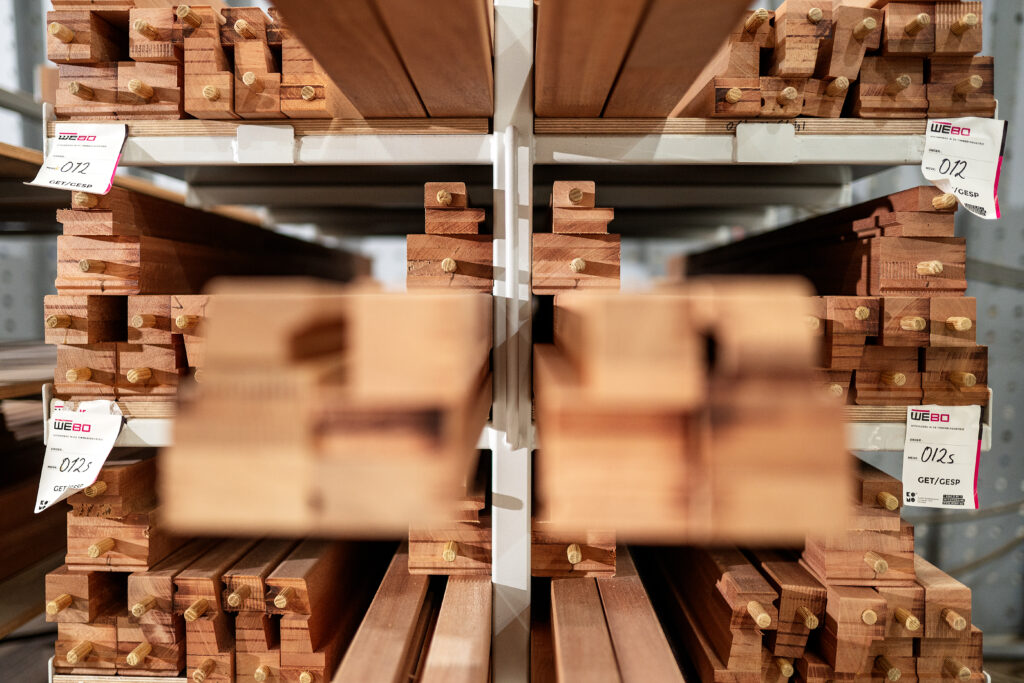Let op! Niet ondersteunde browser
De browser die u momenteel gebruikt is verouderd en ondersteunt niet alle technieken die wij gebruiken voor onze website.
Voor een optimale weergave en bezoekerservaring, adviseren wij het gebruik van een browser zoals Google Chrome (Download Chrome).
The difference between FSC® and PEFC™
FSC® and PEFC™
Both are quality marks and the two have many similarities, but they also have a few differences. FSC® was established in 1993, following an initiative by environmental organisations from 25 countries, specifying agreements on sustainable forest management. The Forest Stewardship Council, or FSC®, was founded two years later. In its early years, this non-profit organisation, mostly aimed at tropical forestry, was not accessible to everyone. Small European foresters did not belong to the Council’s target group, but also wanted a certificate to demonstrate that they engaged in sustainable forest management. FSC® certification was also too expensive for these smaller parties. For these reasons, the Programme for the Endorsement of Forest Certification, or PEFC™, was introduced. Today, PEFC™ provides certification for wood originating from large and small forests.
Certification
Both PEFC™ and FSC® have inspections carried out by accredited, independent companies, which must first be approved by PEFC™ or FSC®. SKH, Control-Union and SGS are a few examples of these companies. To be certified, WEBO must be able to prove that it makes a distinction between different wood flows, which is done by means of CoC certification. [Linkable – see text CoC certification]
The differences between FSC® and PEFC™
The main difference between PEFC™ and FSC® is the way in which they carry out the certification process. PEFC™ depends primarily on underlying inspection companies. Forest can be considered PEFC™-certified by examining local inspections and assessing whether these local inspections meet PEFC™ requirements. The PEFC™ works together with SFI (Sustainable Forestry Initiative) and SCA (Svenska Cellulosa AB, or Swedish Cellulose Company). In the literature, this is also called ‘bottom-up’ certification.
FSC® has a ‘top-down’ approach to the market, where a separate policy is determined for each individual country. Once FSC® has established the standards for this policy, they examine each individual forest in the country in question to determine whether it meets the criteria.
Decision-making
The decision-making processes of both parties are also different. PEFC™ has nine stakeholder groups who form a decision-making committee. None of these groups can independently adopt or reject a decision, neither internationally, nor country-specific. From an international point of view, the groups are composed of various stakeholders, including nature and environmental organisations, indigenous peoples, industry associations and trade unions.
FSC® works with a general member meeting in which decisions are made by three chambers. The three chambers, consisting of the members, represent the three social pillars; social, economic and environmental impact.
The aim of PEFC™ and FSC®
The aim of PEFC™ and FSC® is one and the same: creating and implementing sustainable forestry policy. By doing so, they hope to save the forests for the future and protect them against destruction. The policies of both PEFC™ and FSC® rest on three pillars: social, economic and environmental impact.
This text was written based on the Journal of the NBVT, FSC & PEFC

